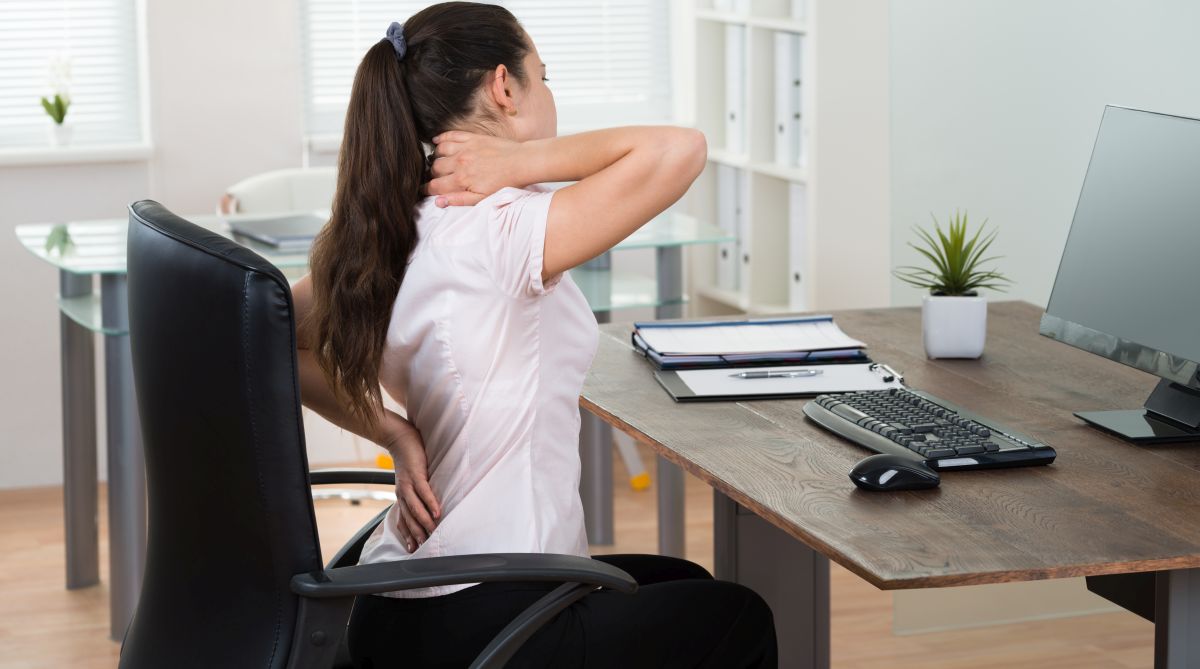Practical tips for maintaining good posture
From sitting strategies to spine-supporting exercises and nutritional insights, cultivate habits to alleviate aches and pains in the fast-paced life.
Ensure protecting your back doing all you can to contribute to good back care.

(Getty images)
A strong back is important for all of us to do pretty much anything or everything. It allows us to maintain a strong posture and support our neck, shoulders, hips and knees. Your back has a level of strength and flexibility to carry you through your day that is prodigious.
When you develop problems in your back, this can extend to your hips and legs. Sitting at a desk for long hours, heavy lifting or driving for long periods of time may lead to back pain. Also, a lot of stretching of muscles and ligaments and any exercise movement can cause a tear, tissue damage and even muscle strain. Pain in the back is the most common symptom of any back problem. It includes –
Advertisement
· Muscle ache
Advertisement
· Shooting pain
· Pain that worsens with bending, standing, walking, twisting or lifting
· Pain that improves with reclining and pain that radiates down your legs
Most of the back pains gradually improve with home treatment and self-care in a few weeks. If it does not improve, see your doctor. You seek immediate medical care if –
· Backache is severe and does not improve with rest
· If the pain extends to legs especially below the knees
· Causes weakness, numbness or tingling in one or both legs
· It is accompanied by fever
· It is accompanied by unexplained weight-loss
Few things that may help prevent or ease back pain are –
· Maintain a good posture: Posture is the way you hold your body while standing, sitting or performing any task. If your posture is good, the bones of the spine – the vertebrae – are collectively aligned. Keep your head up, chest forward and back straight. You may also practice few imagery or posture exercises throughout the day – shoulder blade squeeze, upper-body stretch and arm across chest stretch.
· Good diet: Switch to plant-based foods and cut back on animal products. Avoid trans-fat and saturated fat. Limit your sugar intake. Replace refined carbs like white bread with healthy whole grains, beans and corns. Load up on fruits and vegetables. Include chia and flax seeds in your daily diet to avoid inflammation. Kale, olive oil, fat-free milk, cheese and yogurt, ginger, red grapes and thyme are few foods known to help those living with back pain.
· Right exercise: Regular exercise can strengthen your back. It helps support your spine, relieving back pain. Toe touching is a good exercise for lower back pain. Mild discomfort or pain is common while doing this exercise, but if the pain is more than mild and lasts for more than 15-20 minutes, stop doing this exercise and visit your doctor. Partial crunches can also help strengthen your back. Lie with knees bent and feet flat on the floor. Put hands behind your neck. Tighten your stomach muscles and raise your shoulders off the floor. Breathe out while raising your shoulders. Hold for a second and then relax. Repeat 10 times daily in the morning. You may also try press-up back extensions, knee to chest, pelvic tilts, bridging, Pilates (stretching, straightening and core abdominal exercises) and aerobic exercise. However, some exercises may worsen your back pain. Beware of them! Avoid sit-ups and leg raises. Depending on the causes and intensity of your pain, some more exercises may not be recommended by your doctor. So seek medical advice before starting any exercise.
· Sleep in the right position: By making simple changes in your sleeping position, you can take the strain off your back. If you are a back sleeper, place a pillow underneath your knees so that your spine can maintain its natural curve. If you are a stomach sleeper, put a pillow under your lower abdomen and pelvis to ease back strain. If you are a side sleeper, draw your legs up slightly towards your chest and sleep with a pillow between your knees. If these changes in your sleep position do not help your back pain, consult your doctor.
· Sleep on the right mattress: Sleeping on a wrong mattress may lead to or worsen a backache. According to a study conducted on 313 patients suffering from lower back pain, those using medium-firm mattress reported less pain when lying in bed compared with those using the firm mattress. This finding has been confirmed several times by doctors. It is an eye opener as it is an unambiguous contrast with the old-school recommendation to use a very firm mattress. When choosing a mattress to ease back pain, check a few things. A good mattress should be firm enough to support your lower back and it should not be too stiff or too soft. This kind of mattress is ideal for back sleepers. An ergonomic mattress encourages good sleeping posture, relaxes muscles and generally provides healthy, wholesome sleep.
· Ease your stress: Stress can influence physical symptoms like back pain. Being anxious activates the body’s stress response which causes a cascade of chemical changes in the body which in turn lead to muscle tension, muscle spasm and consequently back, neck and shoulder pain. The greater the degree of the stress response, the tighter the muscles are likely to become. When we are under stress, we may change our behaviours and postures and also we tend to take short breaths – all these leading to a backache.
It is important to take good care of your back from an early age. The earlier you help yourself the less likely you are to have problems in later life. You may feel like resting but moving is good for your back. So keep moving following the above tips.
Advertisement